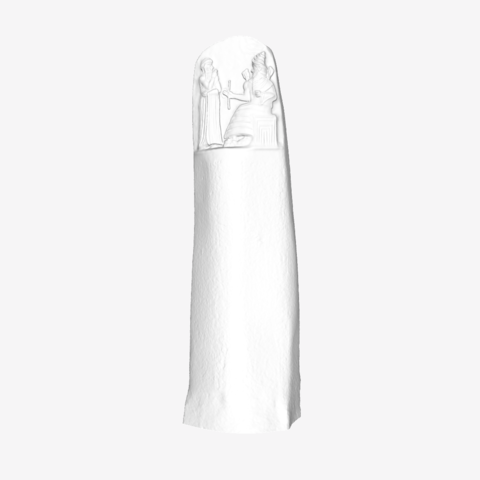
The Hammurabi Code at The Louvre, Paris
cults3d
The Code of Hammurabi is a remarkably well-preserved Babylonian law code from ancient Mesopotamia, dating back to around 1754 BC. It ranks as one of the oldest deciphered writings of significant length worldwide. The sixth Babylonian king, Hammurabi, drafted the code, and partial copies exist on a human-sized stone stele and multiple clay tablets. The Code comprises 282 laws, with graduated punishments that adjust "an eye for an eye, a tooth for a tooth" according to social status, distinguishing between slave and free men. Nearly half of the Code deals with matters of contract, establishing, for instance, the wages owed to an ox driver or a surgeon. Other provisions set the terms of a transaction, defining the liability of a builder for a house that collapses, for example, or property that is damaged while left in someone else's care. A third of the code addresses issues related to household and family relationships such as inheritance, divorce, paternity, and sexual behavior. Only one provision appears to impose obligations on an official; this provision establishes that a judge who reaches an incorrect decision must be fined and removed from office permanently. A few provisions address issues connected with military service. The code was discovered by modern archaeologists in 1901, and its first translation was published in 1902 by Jean-Vincent Scheil. This nearly complete example of the Code is carved into a diorite stele in the shape of a massive index finger, 7.4 feet tall (see images at right). The Code is inscribed in the Akkadian language, using cuneiform script carved into the stele. It is currently on display in the Louvre, with exact replicas in the Oriental Institute at the University of Chicago, the library of the Theological University of the Reformed Churches in The Netherlands, the Pergamon Museum of Berlin, and the National Museum of Iran in Tehran.
With this file you will be able to print The Hammurabi Code at The Louvre, Paris with your 3D printer. Click on the button and save the file on your computer to work, edit or customize your design. You can also find more 3D designs for printers on The Hammurabi Code at The Louvre, Paris.
